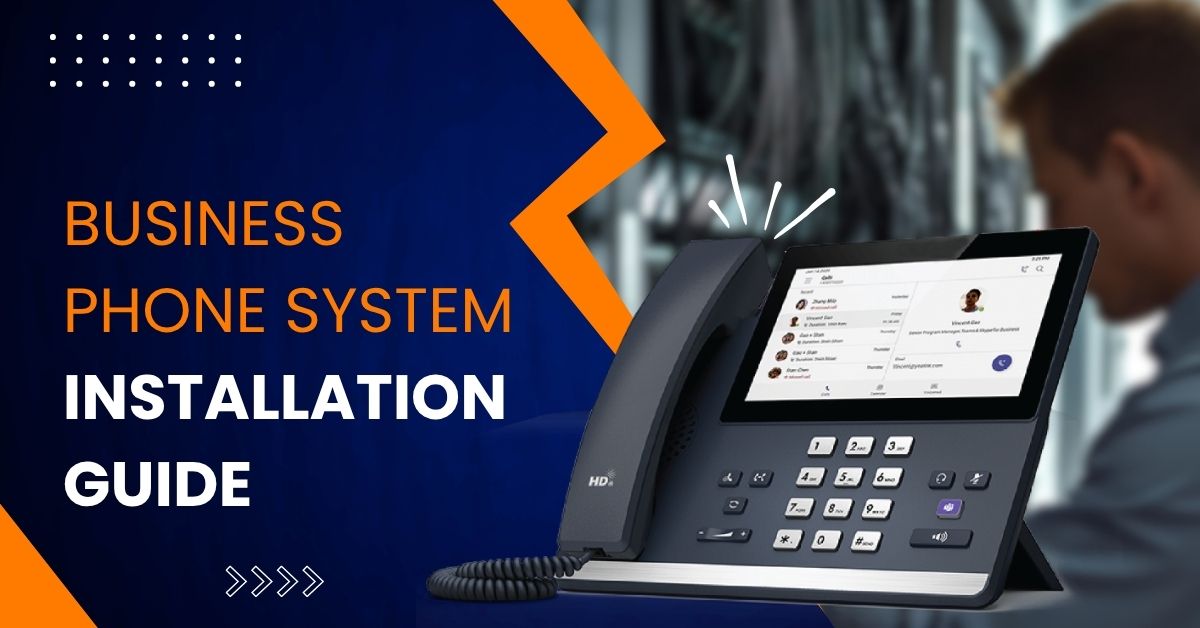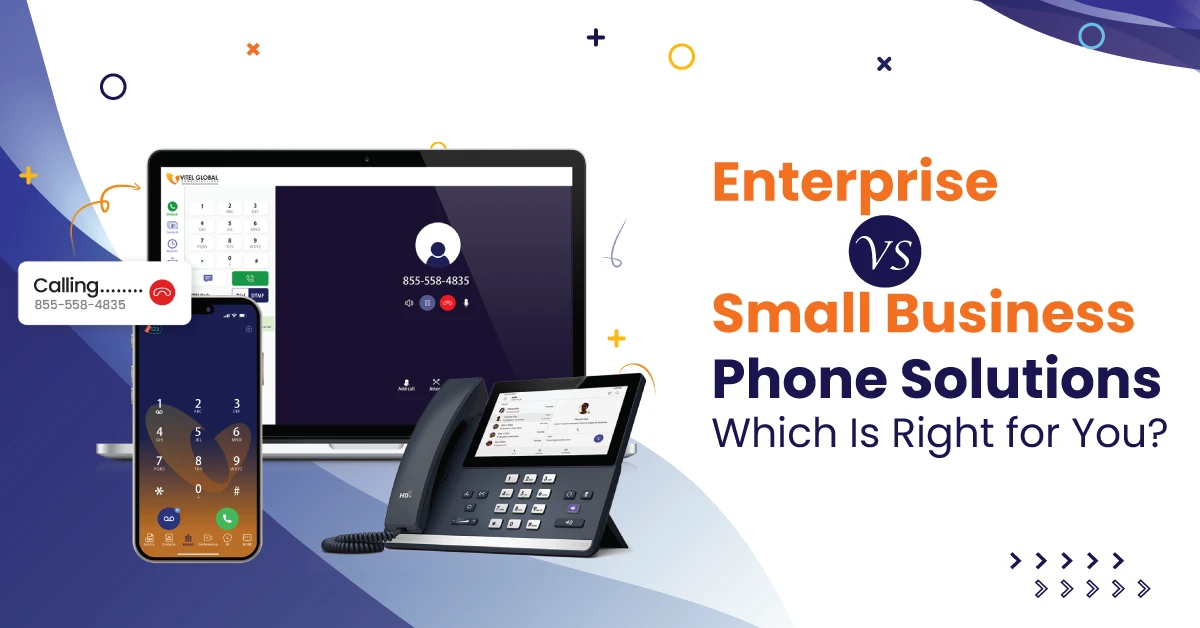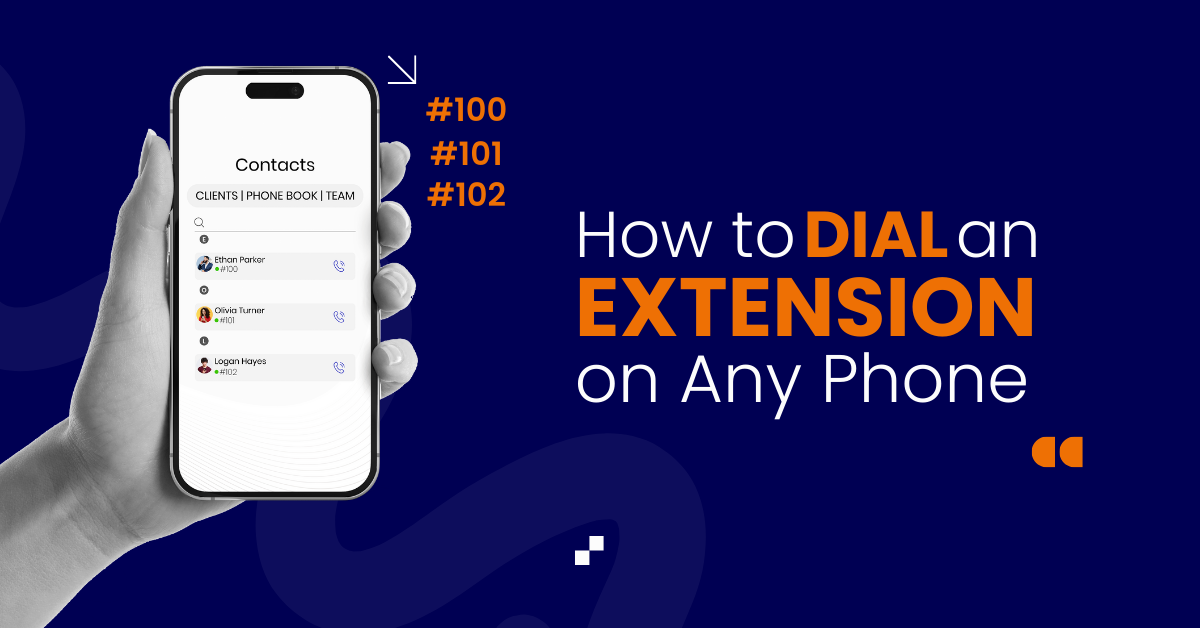How to Transfer Landline Calls to a Cell Phone
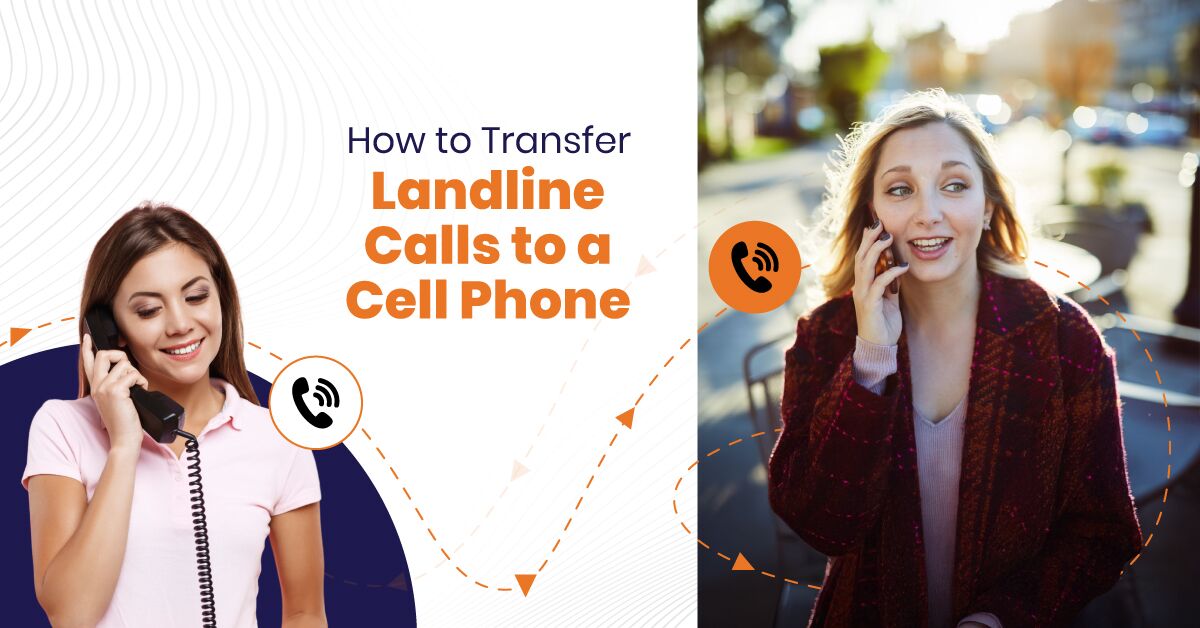
6 min read
Table of Contents
Why Landline Call Forwarding Isn’t Optional Anymore.
Whether you’re using a traditional landline, a cordless phone, or a legacy desk phone, being tied to one spot is a deal-breaker in a mobile-first world. Your clients, team, or prospects expect a fast response, even when you’re nowhere near your landline number. The solution? Forward those incoming calls directly to your cell phone.
It’s Not Just Convenience, It’s Survival
- Missed business calls cost revenue
- Missed home phone calls mean missed moments
- Delayed responses fracture trust
Let’s understand in this blog why transferring your landline phone to a mobile phone is important and the new normal for businesses.
Understanding the Need: What Does It Mean to Transfer Landline to Cell Phone?
It’s simple: you tell your landline service provider to route your phone calls to a different telephone number, specifically, your cell phone number. No need to unplug cables or ditch your old phone. The system quietly forwards calls to your mobile device, whether it’s a flip phone, smartphone, or even an old iPhone you’ve repurposed.
Two powerful options:
- Call forwarding using star codes like *72
- Porting your number to a virtual phone system, VoIP or UcaaS service providers like Vitel Global.
Both keep your number live, visible on caller ID, and reachable without physical presence.
Why Growing Businesses Use Call Forwarding to Mobile Phones
Whether you’re a startup scaling fast or a small business with distributed teams, this one change unlocks better control and greater efficiency:
- Stay accessible even outside business hours
- Prevent dropped calls by routing to multiple devices
- Avoid duplication of numbers with a single landline phone number working across wireless phones
More importantly, you gain freedom without losing identity. Your existing landline becomes a smart gateway into a unified communications solution, one that moves with you.
How to Activate Call Forwarding From Your Landline Phone
Ready to make the switch? You can activate forwarding in just a few steps. Most landline service providers support these actions.
Here’s how to forward your landline to your mobile:
- Pick up the receiver, and you’ll hear the dial tone
- Dial the star code, *72 is the most common across carriers
- Enter your mobile number, including the area code
- Wait for the confirmation tone or automated message
- Hang up
Your cell phone rings now when someone calls your home number. Want to reverse it? Dial *73 to deactivate.
Pro tip: This works on most landline setups, from legacy copper lines to digital VoIP lines installed by your landline carrier.
The Google Voice Alternative: Forward With Flexibility
If you’re after a smarter, app-driven way, Google Voice offers an incredible upgrade path.
- Set up a virtual number tied to your cell phone
- Forward calls from your landline or business number
- Use the Google Voice app to manage text messages, voicemail, and call logs on any mobile device
Perfect for solopreneurs or hybrid teams looking for low-cost flexibility.
When You Need More: Virtual Phone Systems
Need to forward calls not just to one device but to your entire team? That’s where a business phone system is required. They specialise in building scalable virtual phone systems that let you:
- Forward to multiple mobile carriers and devices
- Manage your phone menus with visual drag-and-drop
- Use analytics to reduce missed calls and track forwarded calls
- Route calls based on time, region, or availability
- Integrate with CRMs for smarter business communication
No more toggling between devices. One business phone system, many routes, managed with just a few clicks.
Managing Forwarded Calls Like a Pro
Once your landline number is forwarded to your cell phone, it’s not just about receiving calls; it’s about owning the conversation. Business leaders, remote teams, and growing businesses need clarity and control.
Here’s how to manage it smartly:
- Check device settings to ensure your mobile phone accepts unknown or forwarded calls
- Use caller ID filtering if your landline service provider doesn’t label forwarded calls
- Let voicemail step in outside your business hours
- For small business owners, create personalized greetings through your virtual phone system
Forwarding doesn’t stop at redirection; it elevates the customer experience when you add personalization, time-based routing, and smart logic.
Beyond the Basics: Forward to Multiple Devices
Let’s say you’re out. Your assistant is in. And a client needs help, now.
With advanced call forwarding, your landline telephone number can ring:
- Your cell phone
- Your team’s desk phone
- A cordless phone in your office
- A virtual number that routes to voicemail when everyone’s unavailable
This multi-path setup is crucial for reducing missed calls and avoiding business disruption. Especially helpful for hybrid setups, remote work, or fast-moving small businesses.
Using VoIP Services for Landline Forwarding
Old phone lines are disappearing. Virtualized infrastructure is winning. And VoIP devices make this transition simple.
Instead of relying on analog landline service, here’s what you can do:
- Replace your traditional landline with a VoIP line
- Use a VoIP platform like Vitel Global to assign a business number that lives online
- Control where calls go, mobile phones, toll-free numbers, or even text messages
With a VoIP service, your call forwarding isn’t limited by hardware. You manage everything through a dashboard, calls, routing, missed calls, voicemail greetings, and device linking.
No more dealing with physical phone lines, long wait times from your landline provider, or unpredictable monthly fees.
Landline to Cell Porting: A Long-Term Shift
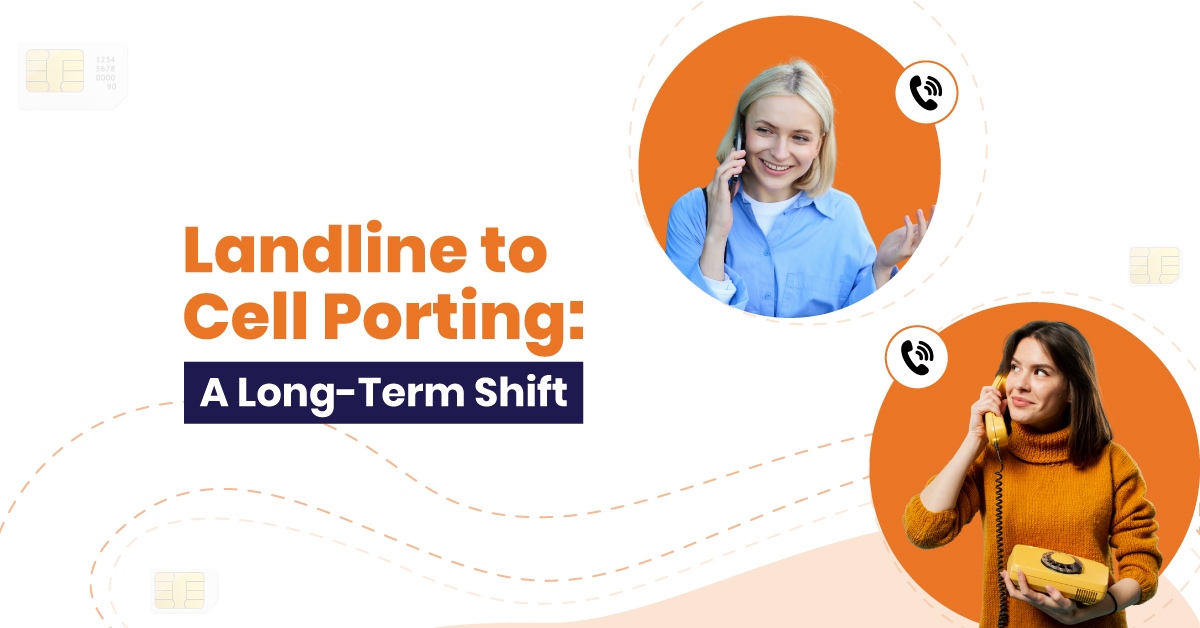
Unlike forwarding, porting permanently moves your landline number to your mobile carrier or VoIP system.
1. Why port your landline?
- You want to keep your number forever
- You’re ending your landline service entirely
- You want more freedom across devices
2. The porting process:
- Contact your new provider (like Vitel Global)
- Provide your current account details and telephone number
- Wait for approval and transfer confirmation
- Test your new cell phone or system once live
Porting lets you retire that old landline while preserving your professional identity. And yes, you can receive calls, set text message notifications, and manage call flows on a single dashboard once it’s done.
What If You Have Poor Reception?
It happens. Maybe your mobile device doesn’t get a great signal indoors. Maybe your flip phone still holds sentimental value.
Here’s the fix:
- Use VoIP over your internet connection to bypass weak signal zones
- Plug a device like Cell2Jack into your old phone to simulate wireless phone routing via Bluetooth
- Route calls to a home phone during off-peak hours using your virtual phone system
Tech should adapt to you, not the other way around.
Setting Up a Virtual Number That Travels With You
If you’re managing client calls, sales inquiries, or team collaboration, you’ll need more than just call forwarding; you’ll need a virtual phone system.
Vitel Global’s platform makes it easy:
- Choose your number: Local area code, toll-free, or custom business identity
- Route your calls: Set logic to ring your cell number, desk phone, or team members’ mobile devices
- Handle overflow: Auto-forward to voicemail, assign to agents, or direct to after-hours prompts
- Control it all: Use our web dashboard or app to update call flows in real time
Your virtual number isn’t tied to a phone line or cordless phone. It’s smart, scalable, and ready for business, across any device, anytime.
Final Take: Why Growing Businesses Are Making the Switch
Whether you’re running a law office, tech startup, or retail business, the shift is happening:
- Business phone system costs are dropping with virtual options
- Teams are spread out, remote phones, desk phones, and cell phones all need to ring in sync
- Call volumes spike, forwarding tools reduce missed calls, dropped leads, and revenue loss
- Your home phone doesn’t work like it used to; it’s time to scale smart
Brands using Vitel Global eliminate the hassle of maintaining outdated lines, juggling hardware, or limiting availability. They manage everything from one pane of glass, and their customers never notice the difference.
How to Port Your Landline Number with Vitel Global
Prefer to move your landline phone number completely to a new system? Here’s how simple the porting experience is:
- Submit a request: Start the number transfer on our platform
- Verify ownership: Provide documentation from your current landline carrier
- Choose your setup: Route calls to one or multiple cell phones, or centralize in a unified communications solution
- Go live: After a short downtime, your telephone number goes fully digital
Once ported, you can send and receive text messages, route calls, monitor caller ID, and analyze volume, all without touching the old landline again.
Vitel Global provides virtual numbers, VoIP, UCaaS, and smart call forwarding built to grow with you across devices and time zones.
Frequently Asked Questions
1. Can I transfer my landline to a cell phone on my own?
Yes. Use your provider’s call forwarding settings, or port your number with support from a service like Vitel Global.
2. Will I still get calls on my old landline after forwarding?
No. Once call forwarding is activated, calls go directly to your cell phone or designated number.
3. Can I keep my old landline number forever?
Absolutely. Porting your number transfers it permanently to your new platform, no change required.
4. Is there a fee for call forwarding or number porting?
Some landline service providers charge a small monthly fee for forwarding. Porting may involve a one-time fee. Vitel Global provides transparent plans for both.
5. What if my reception is weak at home?
Use a VoIP service or devices that link your landline number to a wireless phone over broadband to avoid dropped calls.
6. Can I forward my business calls to multiple team members?
Yes. With Vitel Global’s unified communications solution, calls can be routed to multiple cell phone numbers, agents, or departments.
7. Can I still receive text messages after porting my number?
Yes, text messages and phone calls work seamlessly once ported to a digital or VoIP device.
8. How long does porting take?
Generally, porting your landline number takes 1–5 business days, depending on your current landline carrier and document verification.
9. Do I need an internet connection?
Yes, for VoIP, virtual systems, or app-based routing. Basic call forwarding can work without the internet.
10. Can I forward calls to a toll-free number or Google Voice?
Definitely. Forwarding works with toll-free, Google Voice app, or any number that can accept incoming calls.
Published: August 21st, 2025
Subscribe to Our Latest Updates
Get monthly product and feature updates, the latest industry news, and more!

